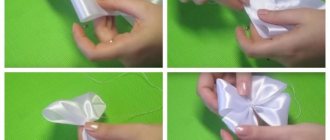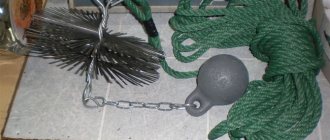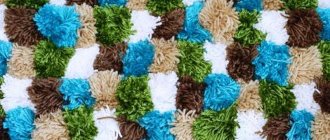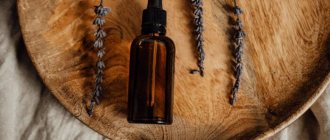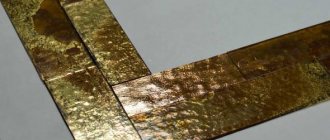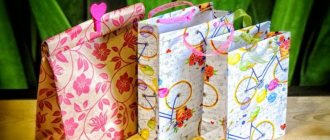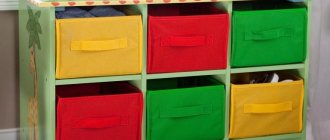Throughout my childhood I washed myself with a natural loofah washcloth! The most interesting thing about this is that I had no idea that it was a loofah! Its interesting shape, fibrous, porous structure did not in any way lead me to believe that it was a dried fruit!
Having grown up, I wondered where the raw materials for this natural washcloth come from... My surprise knew no bounds, honestly! So what is a loofah?
In common parlance, it is customary to write the word loofah with one letter f. However, the name is correctly spelled with two letters f, that is, luffa!
Transplantation into open ground
After the issue with the location has been resolved, it is necessary to plant the plants themselves. If the luffa is placed in a greenhouse, then the optimal time will be the second half of May, and if open ground is chosen as a permanent place of growth, then all work should be postponed until the beginning of June.
Before planting, you need to prepare holes, the depth and width of which will be 30 centimeters. The distance between plants should be at least one meter.
In order for the luffa (loofah) to take root as best as possible in a new place, the soil must be fertilized:
- You need to pour half a bucket of humus into the bottom and add 2 tablespoons of potassium sulfate there.
- Or you can use half a glass of ash per plant.
The luffa needs to be deepened to the cotyledon leaves, then the roots are carefully dug in; it is very important not to damage them during planting.
Loofah - how to grow a natural loofah
- We buy loofah seeds, there are a great variety of them, the “Cylindrical” variety is recommended, it is well suited for making washcloths.
- The technology for growing loofah is similar to growing cucumbers. It does not like replanting, is moisture-loving, and does not bear fruit well when planted thickly.
- We sow the seeds in separate peat cups from early March to mid-April; planting dates depend on your climate. In the Kirov region, we plant loofah seeds in early April.
- Make sure that the soil is always moist and the temperature before emergence is high, 25-30 degrees. When shoots appear, move the cups to a cooler place.
- Seedlings that have reached 40 days begin to harden. When the weather is warm and the nights are warm, they are planted in the ground on the south side.
- Loofah is very sensitive to soil; it loves and bears fruit well in loose, light and nutritious soil. Prepare the area for it in the fall, add humus and ash.
- We prepare a hole, pour humus into it and mix it with soil, transplant the seedlings carefully, without destroying the lump of earth where the roots are located. The root system of the loofah is superficial; it is recommended to immediately place a support for the plants, and as it grows, stretch the nets or guide the plant along a gazebo or a special arch.
- The distance between plants should be at least 1.5 meters; it grows very much, and when planted thickly, it does not produce a good harvest. When reaching 5 meters, the middle branch must be pinched, this will increase the yield.
- We feed the plant 1-2 times a month, add 1 liter of mullein and 0.5 liter of ash to a bucket of water.
- We don’t let the soil dry out, but we also don’t allow it to become waterlogged.
This is how you can grow this wonderful and beautiful loofah plant.
How to make a washcloth soft
Expert opinion Soloviev Pavel Viktorovich Designer with many years of experience and experience.
Not everyone is a fan of harsh effects on the skin. But, since everything natural in itself is very useful for us, you can make a gentle and pleasant sponge for the body from hard luffa.
Children, older people and those who want to maintain their beautiful summer tan for as long as possible love to wash themselves with a soft washcloth. There is still a way out of the “hard” situation.
In the bathhouse kingdom everything is much simpler! Father himself, the heat and steam of the bath softens the hard fiber. That’s why I wasn’t afraid of this hard washcloth as a child, the bath itself made it soft.
Of course, there is another way to make a washcloth soft. It is made double-sided, that is, on one side a soft fabric or sponge is sewn onto the luffa. You can also place the sponge inside the skeleton of the luffa, this will give twice as much soap suds, which will naturally reduce the hardness of the washcloth.
Tips for growing luffa
- Germination can take up to 14 days, so patience is required.
- Before planting, soak the seeds overnight in a glass of water to speed up germination.
- Plant 3 or 4 seeds a few centimeters apart in a group, pushing them 1 centimeter into the soil.
- Create spatial groups at a distance of 15 to 20 centimeters
- Once the plants reach 30 cm in height, thin out the smaller seedlings from ground level, leaving only the strongest to grow, one or two per group.
Planting luffa seeds
Loofah seeds can take up to 150 or even 200 warm days to germinate, grow into a vine, flower and produce a sponge ready for harvest, so most gardeners in colder climates start luffa seed seedlings indoors in tall pots (12-15 cm.) approximately 4-6 weeks before the last possible spring frost. Gardeners in warmer zones can plant seeds directly into the soil or into an outdoor container if the weather is warm in late spring. For good germination, the temperature of the soil, not the air, must be at least 21 degrees. Don't rush, the seeds are more likely to rot than to germinate.
Advantages and disadvantages of natural washcloths
Manufacturers offer us a large selection of a wide variety of natural washcloths, which differ in shape, size, material density, and structure. Some people make eco-scrubbers with their own hands. I, too, recently had this desire: I have jute at home, and I know how to knit)). But so far this has not come to fruition.
Why should you choose natural washcloths for your hygiene, what advantages do they have over synthetic ones:
- Act as an antiseptic
- Massage the skin, increase its tone
- Improve blood circulation
- Cleanses pores
- Do not cause allergies
- Freely pass air
- Smell good
- Pleasant to the touch
- Environmentally friendly: decomposes when disposed of
Eco-scrubbers, when used and cared for correctly, will help you say goodbye to visible skin problems and improve the appearance of your body. They will help you cheer up in the early morning and relax after a hard day.
At the same time, such products are difficult to maintain and in some respects are inferior to their artificial counterparts, namely:
- They don’t release water well and take a long time to dry.
- Harmful microorganisms quickly develop in them
- Short-lived (average service life is two to three months)
- Most materials are hard to the touch
- Most often they foam poorly
- More expensive than synthetic analogues
Such a list of disadvantages can be intimidating, but in fact the advantages outweigh, don’t they?
Plant care
Many people are interested in such a plant as luffa. How to make a washcloth? To make a bath accessory, you first need to grow high-quality fruits.
Luffa leaves absorb a huge amount of moisture, so you need to carefully ensure that the soil does not dry out and the plant has constant access to the necessary nutrients. Water for irrigation must be warm, otherwise the luffa may die. Experienced gardeners also recommend spraying the vine itself once every two weeks or using a sprinkler.
As soon as the first mature ovaries are formed, you need to select 3-5 of the strongest ones, the rest need to be plucked out. In order for nutrients to reach the fruit, it is better to remove the side branches, the same applies to excess green mass.
Luffa, like any other plant, requires a large amount of oxygen, so the soil needs to be loosened three times a season, given the shallow root system, this procedure must be carried out very carefully.
Pollination - initially only female flowers are formed, male flowers begin to appear only after 10-12 days. Given the nature of the plant, it is almost impossible to pollinate it with the help of insects; the most reliable way is to use the manual method. It will be possible to find out whether the work was carried out successfully or not in a few days; the pollinated ovaries increase significantly in size.
How to make a loofah from luffa fruit
In order to turn a huge fruit into a wonderful bath attribute, you need to know some subtleties.
Only from ripe fruits can you make a sponge, that is, the pulp inside must dry. The color of the fruit will help you find out the exact time; when it turns brown, the time has come! And, of course, don’t forget about the dry tip at the end.
If the fruits have not had time to ripen (for example, you are unlucky with the weather), then they can be collected green and dried in a warm, dry room.
In order to obtain the skeleton of a loofah without much difficulty, you must first work with the fruit. Some summer residents recommend soaking the luffa skin for several days in water to soften it. But, there is a more practical way:
Dip the dry fruit in boiling water for 10-15 minutes, then cool and the skin is easy to peel. Once you get your future loofah, hold the fibers up to the light. Surprisingly many seeds, right!?
You also need to get rid of the seeds; this can be done in two ways - picking them out or putting a washcloth in water. The seeds should come out of the fibers on their own.
Once you have a real luffa sponge in your hands, rinse it in a soapy solution, then in clean water and let it dry in free air. Now it's time for your imagination! You can cover the luffa with soft fabric, cut it into convenient pieces, make double-sided washcloths - in general, whatever you want!
Collecting luffa for eating
Using a sharp knife or pruning shears, cut the stem between the vine and the young luffa squash. Harvest while they are still tender (you should be able to easily pierce the skin with your fingernail). For most species, this occurs when the vegetables are about 15 centimeters or less in length. Use them in any summer salad recipe.
- Loofah loofah is a popular natural remedy that is made from the ripened luffa fruit.
- Also known as sponge gourd, sponge gourd or luffa, this plant can be grown from seed.
- You can also eat luffa, but do not eat fully ripened and dried luffa. You clean the one that is ripe and use it as a “sponge” for cleaning the skin and a washcloth.
- Be sure to regularly wash your loofah sponge in boiling water, dry it in a dry place, and disinfect it regularly to avoid contamination.
- Replace washcloths every three to four weeks. You can burn or compost them.
Making loofah sponges
The very first advantage of this plant is that its ripe fruits make good washcloths, natural and strong. Medicine recommends the use of such washcloths. Using this washcloth, you will thoroughly cleanse the skin of old dead cells, it works like a good scrub, you will get an excellent muscle massage and clean, ruddy skin, and will reduce the appearance of “orange peel.”
Loofah fruits ripen late, in our area it will be in October; we remove the fruits before frost and place them in a well-ventilated, warm room to dry.
This process lasts several days and sometimes weeks. You can check whether the fruit is dry or not dry by taking it and shaking it; if the seeds inside roll and rustle, the fruit is ready for making a washcloth.
We soak the dried loofah fruit for several hours, it is recommended to boil water and let the fruits go there, boil for 10 minutes, this will make them easier to peel off.
Another tip, if you want a hard sponge, wait until the fruit is ripe, and if you want a gentle and soft sponge, remove the fruits when they are not ripe and put them to dry.
We peel the dried fruits from the skin, remove the remaining pulp and seeds, use an iron brush for this. Trim the fruit on both sides.
Wash in soapy water several times and dry. The environmentally friendly washcloth is ready!
And now you can dream up. The blank can be cut into any size, handles can be tied on, a massage mitt can be modeled, slippers can be made, you can even come up with different crafts. You can grow this amazing loofah fruit and make your own washcloths.
Before you use it, soak it in hot water for 2-3 minutes, you can rub it.
Despite its naturalness and excellent effect, it is advised not to use a loofah washcloth more than 2 times a week, especially for those with sensitive skin. Everything is good in moderation, use body cream after using a loofah washcloth.
After use, wash the washcloth well and dry it.
Making loofah sponges is a good way to earn money; you can grow several bushes - vines, harvest and make a lot of natural sponges. Agree with stores and sell. From 20 loofah bushes, with good care and proper placement, you can prepare up to 800 loofahs of different sizes.
Loofah washcloths are expensive, but the profit will be significant. Having gained experience, you can expand your production of washcloths and provide them to the entire area. This is a good cash addition to your budget.
Goat hair washcloth (for those who know how to crochet)
- For knitting we will use a crochet hook. First of all, we knit the handle of our washcloth. To make the handle strong we will use two threads. We knit 40 air loops.
- We count three loops from the hook and begin to knit cap stitches. We reach the end of the chain and get the first handle of the washcloth.
- The next chain should consist of 10 air loops. We connect the ends of the handle, tying the end with three loose columns.
- For the main fabric we knit three single stitches, each with 16 loops. To lift, make an air loop (throw the thread over your index finger).
- We pull the resulting loop towards ourselves and get a shortened thread on the finger. We pass the hook into the loop of the next row and lower the elongated loop, holding it a little. We continue to knit a stitch without using a cape.
- Next we knit 50 rows. Be careful, here elongated loops with columns without a cape should alternate (checkerboard order). This will eliminate the risk of the washcloth becoming deformed during use.
- As soon as the fabric comes to an end, we knit three rows of 16 loops (without a cape).
- Set aside the fabric and knit 40 chain stitches (3 stitches without a cape). We connect them with the canvas. The washcloth is ready.
- The resulting washcloth will be too hard and can injure the skin. How to make a washcloth soft? It's very simple: before use, place the washcloth in boiling water for 1-3 minutes.
TIP: You can knit a washcloth from cotton yarn in the same way. And also from any other natural material. The main thing is to use threads that will not fall apart from moisture and friction.
Remember that it is recommended to use a natural washcloth no more than 1-2 times a week. Washcloths made from natural materials are more rigid. Bathing with such sponges requires the use of body cream after each bath.
Let the washcloth, into which your work and your love have been invested, give you health, youth and vigor.
What is luffa
Luffa is an annual plant from the genus of herbaceous vines. It belongs to the pumpkin family, although in appearance it is very similar to a huge cucumber!
Among the people, luffa received a funny nickname - mad cucumber. The size of the fruit can reach up to 50-70 cm, weight from two to three kilograms, and the vine itself has a length of 3 to 6 meters. When dried, the weight of the fruit decreases significantly.
Luffa prefers tropical and subtropical climates, but it also grows in warm regions. Many amateur summer residents successfully cultivate and grow luffa. The plant is whimsical and has its own “requests”. With proper care, attention and care, as well as good climatic conditions on fertile soil, you can get more than three fruits from one bush!
Seed selection
Loofahs are grown from seeds, so that's all you need to get started. It is a plant closely related to the pumpkin, Luffa aegyptiaca (commonly known as angular luffa, ribbed luffa, Chinese okra or vegetable gourd) and L. acutangular, also sometimes referred to as L. cyclindrica (commonly known as smooth luffa, Egyptian luffa or pumpkin gourd), both are sold as luffa.
When you buy a packet of luffa seeds, it may not indicate which seeds you are getting. The two types are pretty much interchangeable, so you don't have to worry about the details. Both are tall - at least 2-3 meters in length - annual vines with beautiful yellow flowers. The appearance of the fruit depends a little on the variety you plant: slanted luffa fruits have longitudinal ridges separated by deep grooves; The smooth luffa fruits have only shallow folds along the length of the fruit. Depending on the variety, the fruit can reach from 30 to 90 centimeters in length. If you have a choice, a smooth luffa is a better choice for sponges.
How to choose a place for a luffa?
Before planting a luffa, you need to choose the right place in which the plant will feel as comfortable as possible:
- Luffa (loofah) does not tolerate strong winds.
- Loves sunlight.
- The plant can be planted both in a greenhouse and in open ground.
- Before planting, you need to take care of the support; it must be strong and strong, because the plant grows very quickly and gains weight. An example would be a trellis, stretched twine, or even a metal mesh fence.
Fertilizing
You can fertilize the plant using the following substances:
- Ammonium nitrate is used during planting, second and third loosening.
- The mullein solution must be mixed with water in a ratio of 1 to 10. Fertilizing is done during the period of ovary formation.
- Complex fertilizer - you can use 1 tablespoon of nitrophoska diluted in a bucket of water. This procedure is carried out in the middle of the growing season.
- Superphosphate extract - 1 tablespoon of the substance is diluted in a bucket of water. This feeding promotes the ripening of seeds and the best ripening of the fruit.
How to care and store
Scientists have proven that natural products such as loofah sponges are an ideal habitat for various pathogenic microorganisms. Therefore, after use, you must rinse it and let it dry completely. But no matter how much you want it, even with careful and proper care, after six months it is best to replace the sponge with a new one.
If you want to use a washcloth for as long as possible, then it is worth preventing the occurrence of germs in it. To do this, you need to pour boiling water over the sponge after and before each use. If the washcloth is in your bathhouse, it will dry by itself, since the temperature in the room is always high and there will be no problems with drying.
Health Benefits of Eating Vegetable Luffa
In many Asian countries, young loofah squash are revered for more than just their taste and nutrition. In fact, they are a traditional remedy for a wide range of health problems, including eye and heart health, preventing blood sugar imbalances, and reducing muscle and joint discomfort, to name a few. Several scientific studies show that young luffas contain some unique antioxidants, anti-cancer compounds and anti-inflammatory compounds, which may explain their long history as a traditional remedy.
Plant and grow luffa for food in the same way as if your primary goal were sponges, except you don't have to rush to plant in the spring. Why? You can expect to have your first tender pumpkins in just 45-60 days. But why choose? Many gardeners allow the first few fruits on each vine to remain on the vine to grow into squashes, and cut all subsequent pumpkins when they reach the ideal size for eating, which is a pretty good case.
How to use a luffa sponge?
- Cylindrical luffa - this is the subspecies suitable for making loofahs. The length of the fruits can reach 70 centimeters, becoming slightly pointed towards the stalk. They are distinguished by thin skin, which is easy to separate, and delicate white pulp. According to the method of preparation, it is no different from sharp-ribbed luffa.
- Luffa (loofah) does not tolerate strong winds.
- Loves sunlight.
- The plant can be planted both in a greenhouse and in open ground.
- Before planting, you need to take care of the support; it must be strong and strong, because the plant grows very quickly and gains weight. An example would be a trellis, stretched twine, or even a metal mesh fence.
To prepare the sponge for use, you need to wash it in soapy water and dry it naturally by hanging it in a sunny area or placing it on a window.
After each use, the washcloth must be thoroughly rinsed and dried.
Varieties of luffa
There are more than 50 species of luffa, but only two types of plants have become widespread. Other types of plants produce too small fruits and require quite a lot of care. Therefore, it makes no sense to grow them
- Luffa ribbed
The young fruits of the ribbed luffa are used for cooking. It is stewed, boiled, and added to other dishes. It can be eaten raw and even canned. The pulp of young shoots is juicy and sweetish (very similar to the taste of cucumber).
But when the time comes for the fruit to ripen, the pulp turns into dry fiber. When the fruit dries completely, a sponge of woven dry fibers forms inside. It is taken from the dried fruit and used to make washcloths, rugs, mattress filling, and even to make hats. Filters for insulation are made from pressed luffa sponge.
- Luffa cylindrical (or Egyptian)
This species produces smooth, cylindrical or club-shaped fruits. This plant is often called loofah luffa. However, cylindrical luffa can be used not only for making washcloths.
The scope of its application is the same as that of the sharp-ribbed relatives. But, most often, natural washcloths are made from it. This species has tender and juicy pulp, delicate and thin skin that is easy to peel from dry fruit.

